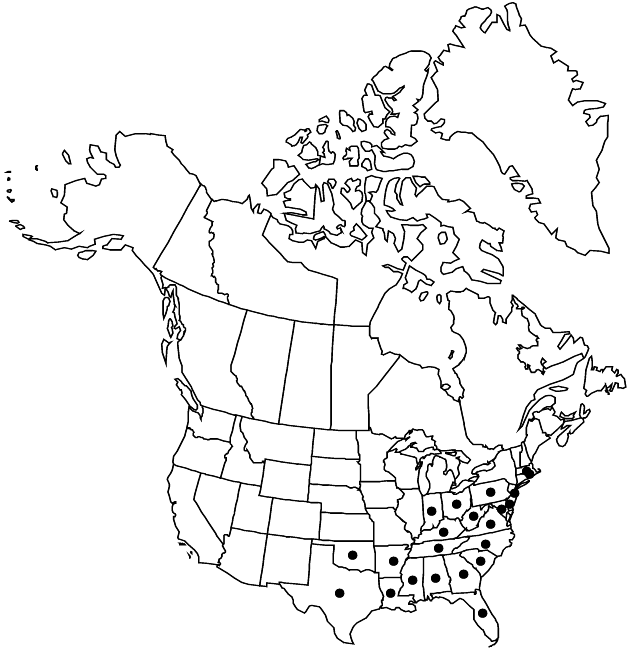Difference between revisions of "Eupatorium rotundifolium var. rotundifolium"
Endemic
imported>Volume Importer |
imported>Volume Importer |
||
| Line 46: | Line 46: | ||
|publication year= | |publication year= | ||
|special status=Endemic | |special status=Endemic | ||
| − | |source xml=https:// | + | |source xml=https://bitbucket.org/aafc-mbb/fna-data-curation/src/2e0870ddd59836b60bcf96646a41e87ea5a5943a/coarse_grained_fna_xml/V19-20-21/V21_1185.xml |
|tribe=Asteraceae tribe Eupatorieae | |tribe=Asteraceae tribe Eupatorieae | ||
|genus=Eupatorium | |genus=Eupatorium | ||
Latest revision as of 20:08, 5 November 2020
Leaf blades 3-nerved from bases, 20–43 × 13–35 mm, broadest near bases, bases broadly subtruncate to broadly cuneate, margins crenate. 2n = 20, 30.
Phenology: Flowering Jul–Aug.
Habitat: Moist, low ground, roadsides, margins of ponds, sandy soils
Elevation: 10–200+ m
Distribution

Ala., Ark., Del., Fla., Ga., Ind., Ky., La., Md., Mass., Miss., N.J., N.C., Ohio, Okla., Pa., R.I., S.C., Tenn., Tex., Va., W.Va.
Discussion
Variety rotundifolium includes both sexual diploids and apomictic polyploids, which are morphologically not distinguishable. The sexual diploids are somewhat more restricted geographically, occurring in a band across northern Florida and southern Georgia.
Selected References
None.
Lower Taxa
None.